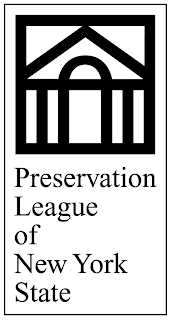 The Cobblestone Society Museum is seeking an Executive Director/Curator. Founded in 1960 to preserve three National Historic Landmark Designated cobblestone buildings in the hamlet of Childs, NY, the Cobblestone Society is a small historical society which has grown to encompass a Museum consisting of 8 historic buildings, including furnished buildings and a Resource Center which houses the Museum’s library. Located in a rural Western New York community in Orleans County, approximately 30 miles west of Rochester, NY, the Museum is just north of the Village of Albion, NY and the historic Erie Canal.
The Cobblestone Society Museum is seeking an Executive Director/Curator. Founded in 1960 to preserve three National Historic Landmark Designated cobblestone buildings in the hamlet of Childs, NY, the Cobblestone Society is a small historical society which has grown to encompass a Museum consisting of 8 historic buildings, including furnished buildings and a Resource Center which houses the Museum’s library. Located in a rural Western New York community in Orleans County, approximately 30 miles west of Rochester, NY, the Museum is just north of the Village of Albion, NY and the historic Erie Canal.
The position of Executive Director/Curator requires a passion for history along with previous non-profit leadership and management, fundraising and grantwriting experience, strong communication skills, excellent writing and interpersonal skills and the ability to form productive relationships with the Board of Trustees, volunteers and the community. A minimum of an undergraduate degree in museum studies,
American history or related field and three years experience will be required.
The position administers the organization’s day-to-day operation, including membership development, volunteers, database and website management, the historic buildings, and management of the collections. Responsibilities also include educational and fundraising programs, grantwriting, supervising volunteers and coordinating programs, events and publications in cooperation with an active Board of Trustees.
Anticipated start date is November 1, 2010. See the Cobblestone Society Museum’s website (www.cobblestonesocietymuseum.org) for a complete job description and required qualifications.
Applications, which must include five [5] copies of a cover letter and resume, must be postmarked by June 15, 2010, and should be mailed to:
Search Committee, Cobblestone Society Museum, P.O. Box 363, Albion, NY, 14411.
Minimum Qualifications:
Bachelor’s Degree in museum studies, or American history, art history, architectural history or related field and three (3) years of experience in the museum field, including at least one year of administrative experience (budgeting, planning, directing and supervising) at a museum or historic site- a Master’s Degree in museum
studies or museum education may be substituted for one year of general experience.
Salary: $21,000-$25,000 (depending on qualifications) plus housing in a single-family 3-bedroom house.
Cobblestone Society and Museum is an Equal Opportunity Employer.







